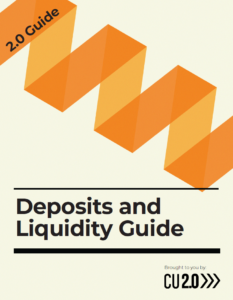While mobile banking dominates much of our focus these days, the reality is that the desktop favorite of online banking isn’t going anywhere. We all know credit unions rarely kill off an old delivery channel, so we can expect it is going to be around for quite some time.
In CU2.0’s Top Online Banking Providers of 2019 (Part 1), we examined many of the strategy considerations for Online Banking selection. In Part 2, we will delve into some of the more tactical but important components.
These components include some things that may greatly impact your members’ experience. For example, for each online banking provider, we’ll evaluate the quality or their assurance testing or the ability to authorize your members into things beyond the online banking world. Many of these items go beyond innovation cycles or road map, but are often represent the feature functionality that directly impacts your members.
Evaluating the Feature Functionality of Online Banking Providers
In many credit unions, switching online banking providers requires a cross-functional team of influencers. Each person has input into the decision making process, and hundreds of features are examined. At this point, we are not going to provide a feature by feature comparison, but we are going to examine some of the more impactful ones.
Online Banking Platform Vendor Comparison Guide (Part 2)
| Competitive Feature Set | Quality of PM & Quality Assurance | Extensible U/I | SDK Portal with examples | Auth from core | Allows other apps to auth | Automation of Back Office | Groups for rate and marketing | Secure Communication | Integrated marketing (ATM, Phone) | |
| Q2 | 4 | 4 | 2 | 4 | 4 | 3 | 4 | 3 | 4 | 3 |
| Narmi | 4 | 4 | 5 | 4 | 4 | 5 | 4 | 4 | 5 | 2 |
| Access Softek | 4 | 4 | 3 | 4 | 4 | 3 | 4 | 3 | 4 | 3 |
| Digital Insight | 5 | 5 | 3 | 4 | 4 | 4 | 4 | 3 | 4 | 2 |
| CUBUS | 3 | 4 | 3 | 3 | 4 | 3 | 3 | 3 | 4 | 2 |
| Tyfone | 3 | 3 | 3 | 3 | 4 | 3 | 3 | 3 | 5 | 2 |
| Alkami | 4 | 4 | 3 | 4 | 4 | 5 | 4 | 4 | 4 | 3 |
Online Banking Category Definitions
This section goes into detail about the different metrics by which we ranked the online banking providers above.
1. Competitive Feature Set
This is the part you have been waiting for. Get everyone together, make a list of all the features your credit union needs. Put them in a long list and a spreadsheet, and the sum of the parts will guide your decision.
The reality is the list of features barely differentiate providers any more. Most will have 95% of everything, and the few things that are different will be unnoticeable to your members. That being said, we think it is important to compare the feature set among both up-and-coming and mature providers.
2. Quality of PM & Quality Assurance
Let’s face it: there is nothing more annoying than a new version of software where things don’t quite work as planned. Maybe a button is missing. Maybe something is misspelled. Maybe there are unplanned error messages that pop up and are hard to diagnose.
Recently, my credit union switched online banking providers. I could only get a confirmation code for two-factor authentication through Internet Explorer, but not through Google Chrome. Of course the issue will be worked out over the next few weeks or months, but my initial reaction was, “Ugh! I can’t believe the credit union and online banking provider didn’t test this more thoroughly!”
So, understanding how the preventative maintenance and quality assurance functions are at the online banking provider are key. After all, you don’t want your members being the guinea pigs.
3. Level of Allowed Customization (without professional services)
Every vendor can customize with one-off projects. But what if you want a vendor that has thought of the things you haven’t yet?
Maybe you want to roll-out new functionality or change options over time. Relying on custom code won’t get you there. Instead, you need a vendor that has customizations that allow you to differentiate for your members without special projects.
This is important for two reasons. First, every market and every group of members is a little different. Personalization for yours is essential. Second, if each change, adjustments or features take months to turn on, test, and deploy. Meanwhile, the market moves faster than your credit union can adapt.
4. Extensible U/I
Extensible User Interface is a programing protocol that allows for code to be automatically reformatted for different browsers and devices. This is a key consideration. You want your provider to make your life (and their life) easier by leveraging the Extensible User Interface protocol.
5. SDK Portal with Examples
If you are a large credit union with some development resources, you will want to look not just at the SDK or API functionality, but also at the whole ecosystem.
A mature provider will have a SDK, API, user manuals, support, and portals with examples of customizations and best practices. These resources can greatly speed up your team’s development cycles and effectiveness.
6. Authorization from the Core
In the early online banking days, usernames and passwords were stored on the online banking platform. More and more often, your members need to get information from and access to a variety of different systems.
If the username, password, or authorization credentials are stuck in the platform, then every time you switch providers, you can plan on a big disruption for your members. Ideally, the authorization will come from your core system.
7. Allows Other Applications to Authorize
As we mentioned in the section above, authorization issues are critical. Picking a provider that allows you to share your members’ credentials with other apps and systems (like online lending or mobile banking) will greatly improve your end user experience.
Anytime you can avoid giving someone an extra username or password, you should consider it a win.
8. Automation for Back Office
In Part 1, we discussed the importance of having back office systems that support the credit union’s back office team. If you are a large shop, then having back office automation is even more important.
Credit unions should leverage automation wherever possible. Whether it means providing an automatic password reset or enabling the member to perform other functions, back office automation is essential for delivering consistent and effective member support.
9. Groups for Rates and Marketing
One of the most frustrating things as a member is when the credit union keeps marketing me the same thing. It’s even worse if it’s something I’ve already signed up for.
Having the ability to create members in groups is extremely useful. Providing unique marketing messages, rates, and other forms of personalization is definitely worth using as criteria for evaluating online banking providers. It will give your members a more personalized experience.
10. Secure Communication
With all of the phishing and other security attacks out there today, having a secure communication method with your members is a great way to protect your members interest and increase trust.
Make sure you choose a provider who can deliver the kind of communications security that your members deserve.
11. Integrated Marketing (ATM/Phone/Video Tellers)
Many credit unions have deployed Integrated Teller Machines (ITMs). These machines allow for video tellers and the reduction of tellers at physical locations. In addition, members will use the delivery channel they prefer, when they prefer it.
Hence, ominchannel marketing—the practice of synchronizing marketing messages across delivery channels—is popular. If omnichannel marketing is on your credit unions desired list, then make sure your online banking provider supports the functionality with an API or other methodologies.
Further Reading
This is part 2 of a 2-part series on online and mobile banking providers. You can see our online banking providers directory here, or read part 1 of the series here.
The world of online and mobile banking is changing rapidly, and that pace isn’t about to slow down anytime soon. If you’d like to stay on top of new developments, technologies, and strategies for remaining current, sign up for the CU2.0 blog.



